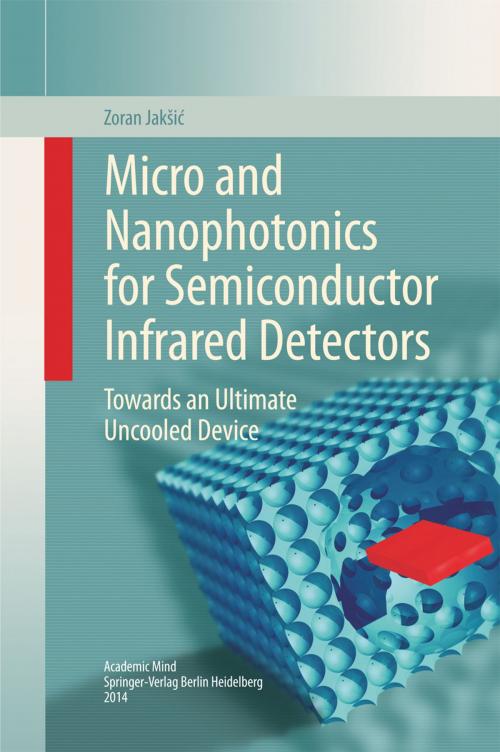Micro and Nanophotonics for Semiconductor Infrared Detectors
Towards an Ultimate Uncooled Device
Nonfiction, Science & Nature, Technology, Microwaves, Material Science| Author: | Zoran Jakšić | ISBN: | 9783319096742 |
| Publisher: | Springer International Publishing | Publication: | September 25, 2014 |
| Imprint: | Springer | Language: | English |
| Author: | Zoran Jakšić |
| ISBN: | 9783319096742 |
| Publisher: | Springer International Publishing |
| Publication: | September 25, 2014 |
| Imprint: | Springer |
| Language: | English |
The advent of microelectromechanic system (MEMS) technologies and nanotechnologies has resulted in a multitude of structures and devices with ultra compact dimensions and with vastly enhanced or even completely novel properties. In the field of photonics it resulted in the appearance of new paradigms, including photonic crystals that exhibit photonic bandgap and represent an optical analog of semiconductors and metamaterials that have subwavelength features and may have almost arbitrary values of effective refractive index, including those below zero. In addition to that, a whole new field of plasmonics appeared, dedicated to the manipulation with evanescent, surface-bound electromagnetic waves and offering an opportunity to merge nanoelectronics with all-optical circuitry. In the field of infrared technologies MEMS and nanotechnologies ensured the appearance of a new generation of silicon-based thermal detectors with properties vastly surpassing the conventional thermal devices. However, another family of infrared detectors, photonic devices based on narrow-bandgap semiconductors, has traditionally been superior to thermal detectors. Literature about their micro and nanophotonic enhancement has been scarce and scattered through journals. This book offers the first systematic approach to numerous different MEMS and nanotechnology-based methods available for the improvement of photonic infrared detectors and points out to a path towards uncooled operation with the performance of cryogenically cooled devices. It is shown that a vast area for enhancement does exists and that photonic devices can readily keep their leading position in infrared detection. The various methods and approaches described in the book are also directly applicable to different other types of photodetectors like solar cells, often with little or no modification.
The advent of microelectromechanic system (MEMS) technologies and nanotechnologies has resulted in a multitude of structures and devices with ultra compact dimensions and with vastly enhanced or even completely novel properties. In the field of photonics it resulted in the appearance of new paradigms, including photonic crystals that exhibit photonic bandgap and represent an optical analog of semiconductors and metamaterials that have subwavelength features and may have almost arbitrary values of effective refractive index, including those below zero. In addition to that, a whole new field of plasmonics appeared, dedicated to the manipulation with evanescent, surface-bound electromagnetic waves and offering an opportunity to merge nanoelectronics with all-optical circuitry. In the field of infrared technologies MEMS and nanotechnologies ensured the appearance of a new generation of silicon-based thermal detectors with properties vastly surpassing the conventional thermal devices. However, another family of infrared detectors, photonic devices based on narrow-bandgap semiconductors, has traditionally been superior to thermal detectors. Literature about their micro and nanophotonic enhancement has been scarce and scattered through journals. This book offers the first systematic approach to numerous different MEMS and nanotechnology-based methods available for the improvement of photonic infrared detectors and points out to a path towards uncooled operation with the performance of cryogenically cooled devices. It is shown that a vast area for enhancement does exists and that photonic devices can readily keep their leading position in infrared detection. The various methods and approaches described in the book are also directly applicable to different other types of photodetectors like solar cells, often with little or no modification.















